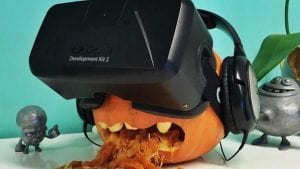VR Review: Here’s How Oculus Quest Compares With Go — Apps and All
https://www.edsurge.com/news/2019-05-23-vr-review-here-s-how-oculus-quest-compares-with-go-apps-and-all
When the Oculus Go was first released, the educational apps were limited.
many more educational apps flooding the Oculus Experiences market
The Oculus Quest is mainly being marketed as an all-in-one VR gaming system, but I see much potential for classroom lessons.
The Oculus Go delivered a VR view, but the Oculus Quest provides us with interactions.
One major difference between the Quest and the Go is the lack of motion sickness with the new device.
The 6 degrees of freedom (6DoF) provides mobility for the student to walk forward, backward, left, right, jump up and squat down. In other words, they can move around just like they would in real life.
The affordable starting price of $399 for 64 GB is comparable to other classroom devices, such as Chromebooks, laptops and iPads.
between the Quest and the Go is the high cost of the apps. By contrast, the majority of my Oculus Go apps were free.
++++++++++++
more on Oculus in this IMS blog
https://blog.stcloudstate.edu/ims?s=Oculus
 State’s universities envision VR resurgence
State’s universities envision VR resurgence
Chris O’Malley
why the sudden interest in VR and AR after years of hype that failed to live up to expectations?
Heather Bellini, of Goldman Sachs Research, noted in a report last year that faster microprocessors and more powerful graphics cards have allowed more images per second to be delivered since the industry’s potential was hyped a decade ago.
There have also been advancements in AR gear, like glasses that allow vision of the real world but also have data or graphical images projected onto part of the glass.
As such, Goldman Sachs is projecting VR and AR to become an $80 billion market by 2025 – roughly equivalent to the size of the current PC market.
he big problems with VR is “motion to photon latency,” which is the time it takes to turn your head and the screen to refresh at the same rate.
++++++++++
more on XR in this IMS blog
https://blog.stcloudstate.edu/ims?s=extended+reality
https://blog.stcloudstate.edu/ims?s=virtual+reality+education
Glasses Use Boarding Ring Technology To Stop Motion Sickness
+++++++++++
more on motion sickness in VR in this IMS blog
https://blog.stcloudstate.edu/ims?s=motion+sickness
 State’s universities envision VR resurgence
State’s universities envision VR resurgence